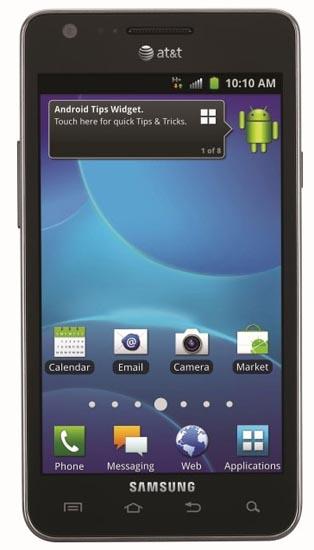
Here in the States, we’ve got a pair of new Galaxy S devices coming down the pipe. For T-Mobile USA there’s the Samsung Galaxy S Blaze 4G, which still promotes the original Galaxy S name, but features up-to-date hardware. And then for AT&T, there’s the Samsung Galaxy S II Skyrocket HD, which is an updated version of the original Galaxy S II Skyrocket that launched not too long ago for the same carrier. I’m not going to talk about how quickly AT&T and Samsung updated the Skyrocket, and how more than likely most of those purchasers will be pretty upset whenever the Skyrocket HD launches. Instead, I’m going to look to the future, and talk about how Samsung can handle the upcoming launch of another device a bit differently.
The device in question is the Galaxy S III by Samsung. We know it’s coming, and we’ve got a pretty good idea that the manufacturer will be showcasing the device at their time in Barcelona, Spain in the coming weeks, thanks to the Mobile World Congress event happening there. This is the stage where Samsung will unveil their next truly flagship device for not only the company, but also Android in and of itself. At least, there’s no reason to think it won’t be a flagship device for Android, considering the previous two versions have been.
But, with the impending launch of the Galaxy S III, I’ve got to wonder if we’re going to see the same exact launch pattern that we’ve see with the other two models. If my rationalization that the Galaxy S III will be a flagship device, just because the other two handsets were is right on, then I probably have to believe that Samsung will be launching the Galaxy S III in much the same way, if not the exact same way as they have in the past.
What am I talking about? I’m talking about the fact that Samsung loves to launch these handsets, their preferred flagship devices, all over the global market first, and then into the United States. And when they do, there are some minor and major differences between what we get here in the States, and what the rest of the world receives. Now, none of that is surprising considering Samsung has to work with the likes of Verizon and AT&T, but the biggest problem isn’t the differentiation between handsets in the physical manner. No, that isn’t the problem at all.
The issue is the fact that these launches here in the States happen months after the initial launch. Let’s start with the original Galaxy S. It was announced in March of 2010, and then released globally (not counting the US) in June of the same year. Verizon Wireless’ version of the Galaxy S, the Samsung Fascinate, was announced in June of 2010, but it didn’t see a release until September. For the other carriers, the wait wasn’t that long, with launches in July.
And then there’s the Galaxy S II. It was announced in February of 2011, and then subsequently saw a global release in April. However, we didn’t get an official announcement about the release of a Galaxy S II-based device here in the States until August. More to the point, the earliest launch of one of the devices here locally wasn’t until September. There’s a definite gap between when these phones are announced, released in the international market, and when the US finally gets their hands on them.
But, can Samsung make things different this time around with the Galaxy S III? I’m not going to tell you that I think they need to, because that’s certainly not the case. If rumors regarding the future device are even half-true, then the Galaxy S III will be a hit just like the other devices, so whatever Samsung decides to do with the launch will probably work for them, and they’ll still sell millions of devices. But, and this is just a personal statement here, I definitely want them to. The Galaxy S III is going to be a ridiculously powerful phone, and I don’t want to have to wait months to get my hands on it, while the rest of the world is showing it off.
So, Samsung, let’s try to get an actual international launch for the device, and cover the majority of markets that really matter, okay? The United States can wait for these devices, but that doesn’t mean we want to. Start working with our local wireless carriers now; before you announce the device, so that by the time you’re ready to launch it, we can have it with everyone else.